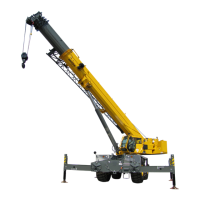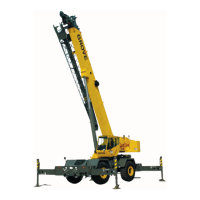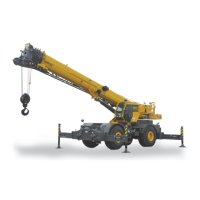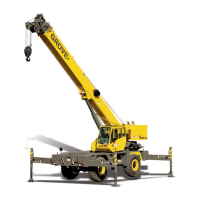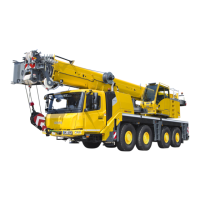OPERATING CONTROLS AND PROCEDURES RT9150E OPERATOR MANUAL
3-116
Published 2-23-2017, Control # 644-00
Travel On Slopes
Travel On Slopes with or without Standard
Counterweight (39,000 lb (17690 kg)) installed
Observe the following when operating a crane on a slope:
• The slope; side to side or fore and aft, must not exceed
15% (8.5 degrees).
• Travel must be on an improved surface or on hard-
packed dry earth having a minimum 0.5 coefficient of
adhesion.
• Travel must be limited to a forward direction only.
• Travel must be limited to 4 wheel drive second gear.
• All boom sections must be fully retracted.
• The boom extension must be in the stowed position or
removed from the crane.
• The boom must be lowered to horizontal and positioned
over the front of the crane.
• The swing brake and turntable lock pin must be
engaged.
• The hook block may be reeved over the main boom
nose; the overhaul ball may be reeved over the main
boom nose or auxiliary boom nose. Each must be
secured at the tiedown on the carrier to prevent
swinging.
• Tires must be inflated to the recommended pressure for
pick and carry operations.
• The hydraulic tank must be filled to the specified level.
The fuel tank must be over half full.
• No loads may be supported by the boom (such as no
pick and carry loads) while traveling on a slope.
• All cribbing and other nonstandard accessories must be
removed from the crane.
• Avoid holes, rocks, extremely soft surfaces, and other
obstacles that might subject the crane to undue stresses
and possible overturning.
• Travel must be conducted with the assistance of a
ground person to warn the operator of any changing
conditions of the terrain being traversed.
• While traveling on slopes in excess of 10% in 4 wheel
drive first gear, it is possible that the engine may be able
to drive through the crane service brakes. If this occurs,
it is recommended to shift the transmission into a
second gear.
Travel On Slopes with Optional Heavy Counterweight
(63,000 lb (28576 kg)) installed
Observe the following when operating a crane on a slope
with the heavy counterweight installed:
• The slope; side to side or fore and aft, must not exceed
10% (5.7 degrees).
• Travel must be on an improved surface or on hard-
packed dry earth having a minimum 0.5 coefficient of
adhesion.
• Travel must be limited to a forward direction only.
• Travel must be limited to 4 wheel drive first gear.
• All boom sections must be fully retracted.
• The boom extension must be in the stowed position or
removed from the crane.
• The boom must be lowered to horizontal and positioned
over the front of the crane.
• The swing brake and turntable lock pin must be
engaged.
• The hook block may be reeved over the main boom
nose; the overhaul ball may be reeved over the main
boom nose or auxiliary boom nose. Each must be
secured at the tiedown on the carrier to prevent
swinging.
• Tires must be inflated to the recommended pressure for
pick and carry operations.
• The hydraulic tank must be filled to the specified level.
The fuel tank must be over half full.
• No loads may be supported by the boom (such as no
pick and carry loads) while traveling on a slope.
• All cribbing and other nonstandard accessories must be
removed from the crane.
• Avoid holes, rocks, extremely soft surfaces, and other
obstacles that might subject the crane to undue stresses
and possible overturning.
• Travel must be conducted with the assistance of a
ground person to warn the operator of any changing
conditions of the terrain being traversed.
Proper Operation of Differential Lock
NOTE: The differential lock will not operate unless the
DRIVE selector switch is in the 4WD-LO position.
WARNING
Vehicle Control Hazard!
When using the differential lock, steering characteristics
may be affected.
Try to use four wheel drive to gain adequate traction
before using the differential lock.
Do not operate the differential lock while the crane is
moving; when traveling downhill, at speeds above 10
mph, on hard, dry surfaces or during axle spin.
Failure to follow these warnings may result in loss of
vehicle control causing serious injury or death.
Reference Only
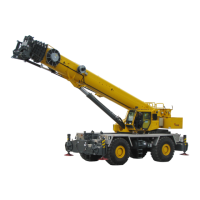
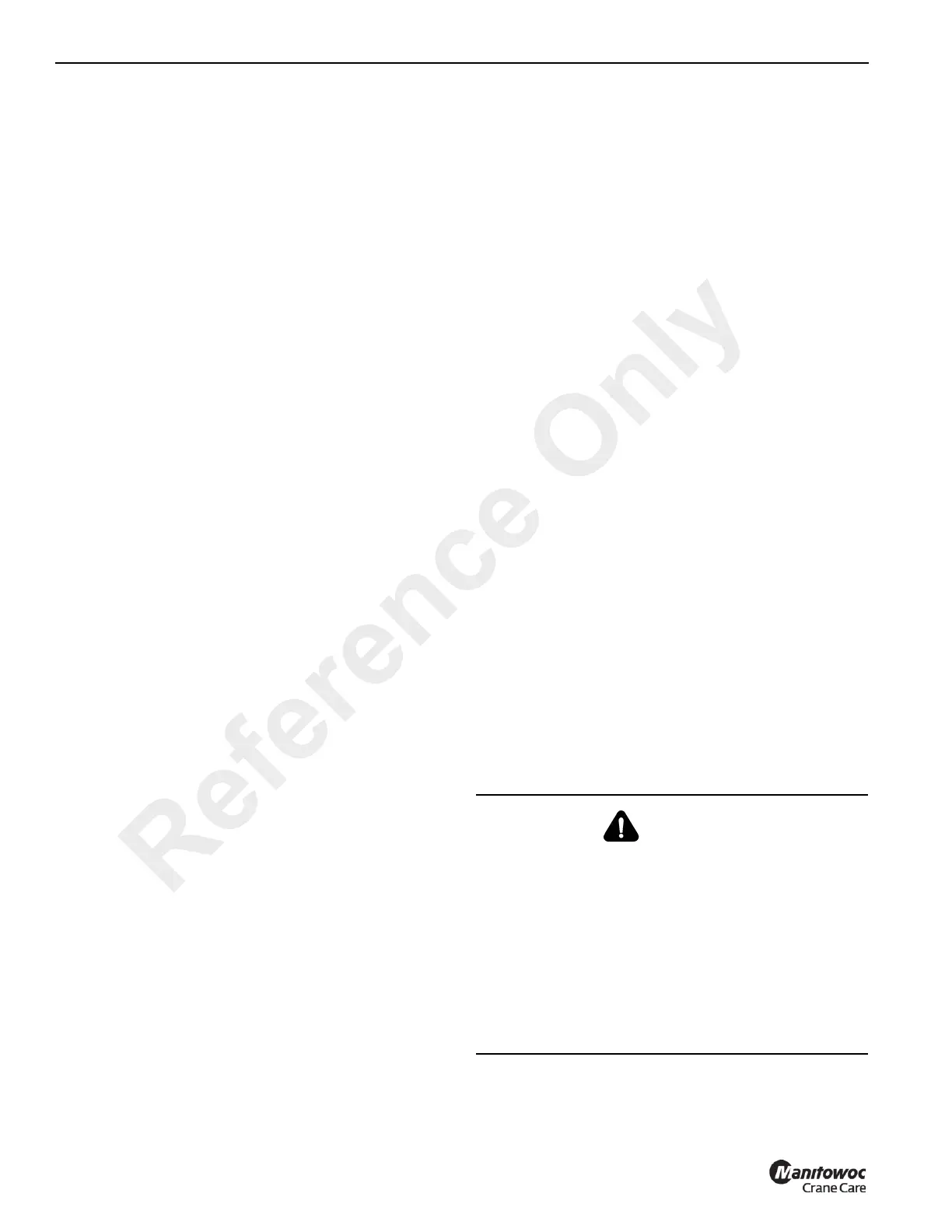